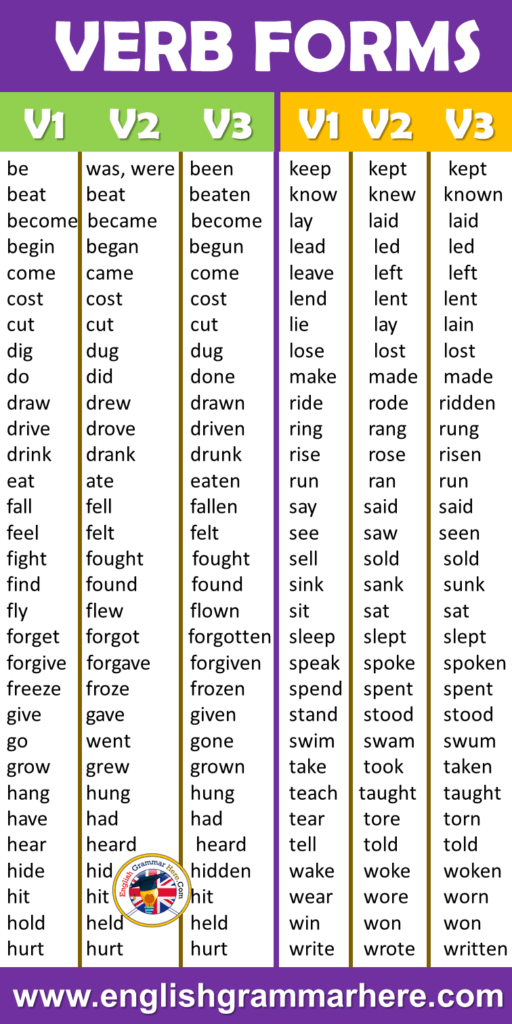

Another student comes up and tries to get a matching pair in the same way. If they don’t match he/she shows them to the others and puts them back down. He/she must read the verbs aloud on the cards and decide if they match. Prepare a set of cards with the infinitive on them (set A), and a set of cards with the past tense on them (set B). The student who wins stays (as the reigning champion) and another student comes forward to challenge. Students can do this in pairs, although with smaller classes I like to set up two facing chairs in front of the class and have students come up and play each other in front of the others. If a student gets a word wrong (or pauses for more than 10 seconds), they lose. Student 1 says the infinitive of the verb.This activity involves students calling out verbs to each other, as if they were passing a ball over an invisible net. Follow this up by asking students to work in pairs and to prepare a story using the verbs on their grid, in the past tense (see 'Stories' section below). The first to cross out all the verbs on the grid calls 'bingo' – and wins. If the student hears the past form of a verb they have on their grid, they cross it out. When they have finished, start reading out past forms at random off the list. Tell them to look at their list of irregular verbs (most coursebooks have such a list at the back, otherwise find a list and copy it) and to complete their grid with nine infinitive verbs. Most of these are well known, so I will go through a few only briefly.Īsk students to make a 3x3 grid on a piece of paper. There are several games that can easily be adapted to practise past tense verbs. These activities focus on the past simple, but they could be easily adapted to focus on the present perfect or the passive (if you wanted to focus on past participles). Here are some activities that can help students with both form and use of irregular and regular verbs.

Only then might they be able to fully ‘learn’ regular and irregular verbs. My advice would be that students need to have opportunities not only to memorize the form but also put it to meaningful use.

Nevertheless, I also know students who could recite the list of all the past tense irregular verbs off by heart and yet have great difficulty putting together a sentence like the one above, at least verbally. I (thinks, then mutters) go went gone… I went to the football game. Student: Yesterday, I go… the football game. go-went-gone, see-saw-seen, buy-bought-bought, make-made-made etc. I’ve lost count of the number of students I’ve met who can recall past tense verbs by saying them along with their infinitive forms. However, learning the form of irregular verbs is one of the few areas where, I feel, memorizing the 'list' actually works. That being said, whenever I came to the list of irregular verbs with a class I always hoped that I would discover a secret or a shortcut to enable my students to learn the forms of irregular verbs without the arduous task of memorising them. Unlike other parts of grammar it was cut and dried – the verb is either regular (add –ed) or not (change it, or not, in some other way). Teaching irregular and regular past tense verbs was, for a long time, one of my favourite activities.


 0 kommentar(er)
0 kommentar(er)
